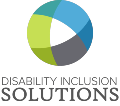Summary
Sensory overload can happen to anyone in any environment, but there are some people for whom it's a constant, debilitating battle. Sensory-friendly spaces can provide much-needed respite for people with autism, anxiety disorders, and other conditions that affect the nervous system.
Imagine you’re in a busy airport. You’ve just landed, and your head is spinning. The noise of the engines, the people, the general chaos of deplaning, and the hectic airport can be overwhelming. You yearn for a quiet area to rest and recover. While it’s not always easy to find this in a public space, universal design is making sensory-friendly areas increasingly available. These areas are being created to help everyone regroup and perform at their best.
Noise and light are two of the most common sensory triggers. Some places, like a busy dining hall, can be overwhelming for people sensitive to noise. Similarly, fluorescent overhead lights can be painful for those with light sensitivity. Imagine what a relief it would be to have a designated area to calm the senses and provide comfort
That’s where sensory-friendly spaces come in. They’re designed to provide a relaxed atmosphere where people are surrounded by pleasant sensations. Creating sensory-friendly spaces is also a great way to make public places more inclusive and accessible for everyone.
Here are 10 tips for creating such spaces:
- Incorporate soft materials like carpets or rugs to muffle noise and reduce echoing.
- Install dimmer switches to control the level of light in the space.
- Add comfortable seating and plenty of pillows to accommodate a variety of users.
- Choose a few calming colors for walls and furnishings.
- Install accessible bubble machines.
- Make gentle, relaxing scents like lavender or chamomile available for those not sensitive to them.
- Provide a variety of tactile and fidget items.
- Offer weighted blankets.
- Evaluate reach range and turning radius for users with mobility devices and service dogs.
- Use Braille, large print, contrasting colors, and raised lettering on signage.
Sensory overload can happen to anyone in any environment, but there are some people for whom it’s a constant, debilitating battle. Sensory-friendly spaces can provide much-needed respite for people with autism, anxiety disorders, and other conditions that affect the nervous system.
Need help determining the most common noise and light issues in your business? Reach out to my team and me. We can evaluate your situation and provide tips for designing a space that’s inclusive and accessible for everyone.





0 Comments